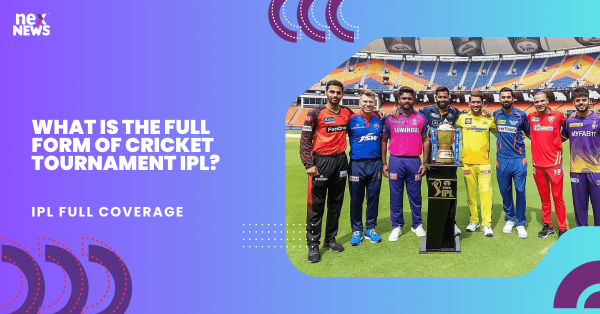Understanding the acronym IPL
The acronym IPL stands for Indian Premier League. It is a professional Twenty20 cricket league in India, known for its fast-paced and thrilling matches. Established in 2008 by the Board of Control for Cricket in India (BCCI), the IPL has grown to become one of the most-watched and eagerly anticipated sports events worldwide.
Since its inception, the IPL has revolutionized the cricketing landscape, attracting top international players and providing a platform for domestic talent to shine. The league follows a franchise model, with teams representing different cities in India. Each team is owned by a consortium or individual, which adds a touch of glamour and business prowess to the cricketing extravaganza. The IPL has not only elevated the popularity of the sport but has also become a major source of entertainment and revenue, contributing significantly to the economy of Indian cricket.
Origins and history of the IPL
The Indian Premier League (IPL) has emerged as one of the most popular and lucrative cricket tournaments in the world. The IPL originated in 2007, when the Board of Control for Cricket in India (BCCI) sought to create a professional Twenty20 league to showcase Indian talent and attract international players. The successful model of the English Premier League and the Australian Big Bash League served as inspirations for the IPL's format.
The first season of the IPL took place in 2008 and was met with immense enthusiasm from fans and players alike. Eight teams representing different cities in India were introduced, and a month-long tournament was held with matches played at various venues across the country. This innovative approach of combining sport with entertainment, including star-studded opening ceremonies and cheerleaders, added a unique flair to the IPL and captured the attention of cricket enthusiasts worldwide.
The format and structure of the IPL
The Indian Premier League (IPL) is renowned for its unique format and structure, which sets it apart from other cricket tournaments around the world. The IPL follows a Twenty20 format, wherein each team plays a single innings, consisting of a maximum of 20 overs. This fast-paced format ensures thrilling encounters, as batsmen look to score as many runs as possible within the limited number of overs.
The IPL consists of eight teams, representing different cities in India. These teams are a combination of homegrown talent, international stars, and emerging players, making for a diverse and fascinating mix of cricketing skills. Each team is allowed a maximum of four overseas players in their playing XI, enhancing the international flavor of the tournament. The teams compete against each other in a round-robin phase, followed by playoffs, leading up to the highly anticipated grand finale. This structure ensures that every team gets a fair chance to showcase their capabilities and provides ample opportunities for fierce rivalries and exceptional performances to emerge throughout the tournament.
Teams and players in the IPL
The Indian Premier League (IPL) attracts some of the best cricketing talent from all over the world. With a total of 8 teams participating in the tournament, the IPL provides a platform for players from different countries to come together and showcase their skills. Each team in the IPL comprises a mix of both domestic and international players, creating a diverse and competitive environment on the field.
The teams in the IPL are a blend of experienced veterans and budding talents. Many renowned cricketers, such as MS Dhoni, Virat Kohli, and Rohit Sharma, lead their respective teams, bringing their wealth of experience and leadership qualities to the table. Alongside these established players, there are also several young and promising talents who are making their mark in the cricketing world through the IPL. The league acts as a springboard for these players to gain exposure, learn from their more experienced counterparts, and earn recognition for their skills.
In addition to the dynamic mix of players, the IPL teams also have a unique and loyal fan base. Each team has a dedicated set of supporters who passionately cheer for their respective franchises. This not only adds to the competitive spirit of the tournament but also enhances its overall appeal. The IPL has witnessed some intense rivalries between teams, both on and off the field, further contributing to the excitement and entertainment factor of the league.
The significance and popularity of the IPL
IPL, short for the Indian Premier League, holds immense significance and has garnered unparalleled popularity since its inception in 2008. With a unique blend of cricket and entertainment, the IPL has become much more than just a sporting event. It has transformed into a cultural phenomenon that captivates millions of viewers worldwide.
One of the key reasons behind the IPL's significance is its ability to bring together players from different nations, fostering unity and camaraderie among them. This league acts as a platform for international cricketers to compete against each other, showcasing their skills and forming relationships beyond national boundaries. As a result, the IPL has become a melting pot of talent, where emerging players can learn from the best and established stars can challenge their limits.
The IPL's popularity can be attributed to its unique format, which combines cricketing prowess with compelling entertainment. The league not only boasts exciting matches filled with thrilling moments but also incorporates captivating off-field attractions such as cheerleaders, theme songs, and celebrity endorsements. Moreover, the IPL has successfully leveraged the power of social media, engaging fans through interactive platforms and creating a sense of belongingness among them. This combination of cricketing excellence and engaging entertainment has made the IPL a favorite among cricket enthusiasts and casual viewers alike.
